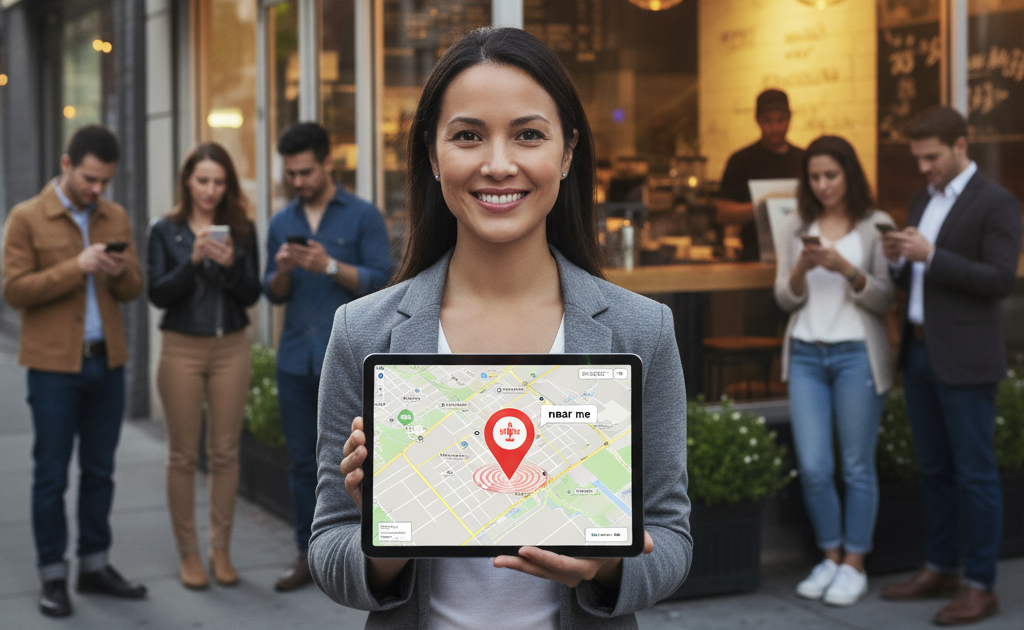October 03, 2025

In today’s digital-first dining world, one of the most powerful ways to attract new customers is through “near me” searches. When someone types “Italian restaurant near me” or “best brunch near me” into Google, they are already in “purchase mode” — they’re ready to make a decision and book a table. If your restaurant isn’t properly optimized for these searches, you could be missing out on hungry, ready-to-book diners who are actively looking for places to eat nearby.
Here’s a breakdown of how you can ensure your restaurant shows up when hungry locals search for places like yours.
Your Google Business Profile (GBP) is the foundation of your local SEO strategy. This free tool from Google enables your restaurant to appear in the local map pack, which shows up prominently when someone searches for a business near them. If your profile isn’t set up or optimized, your restaurant may not even be visible to people looking for you.
What to do:
Optimizing your Google Business Profile is one of the easiest and most effective ways to ensure that your restaurant shows up when locals search for places to dine.
Learn more in What Every Restaurant Owner Should Know About Google Business Profile.
When it comes to “near me” searches, proximity is a major ranking factor. To improve your chances of appearing in these searches, you need to incorporate location-based keywords throughout your website. This helps search engines understand where your restaurant is located and allows them to match your website to local search queries.
What to do:
By embedding these keywords, your website becomes more relevant to local search queries, making it easier for Google to show your restaurant when someone types a “near me” search.
Related read: Restaurant Branding 101: Why Your Online Identity Matters.
A huge portion of “near me” searches is conducted on smartphones. In fact, Google reports that “near me” mobile searches have increased by 150% in recent years. This means that if your website isn’t optimized for mobile, potential customers could quickly bounce to a competitor.
What to do:
In short, make sure your website is easy to navigate and quick to load on mobile devices. This small tweak can have a huge impact on user experience and conversion.
See how: The Ultimate Restaurant Website Checklist: From Menus to Mobile UX.
Search engines trust social proof, including customer reviews, as a key factor in ranking local businesses. Positive reviews not only improve your restaurant's credibility but can also boost your chances of ranking higher in search results for “near me” queries.
What to do:
As Google’s algorithms are heavily influenced by user-generated content, especially reviews, actively managing and responding to reviews can give your restaurant a competitive edge in local search rankings.
Deep dive: How Reviews Impact Restaurant SEO (and What to Do About It).
Google uses citations (mentions of your business on other websites) as a way to determine your restaurant’s legitimacy and relevance in the local area. These citations must include accurate NAP (name, address, phone number) details.
What to do:
The more citations your restaurant has across reputable local platforms, the more likely you are to appear at the top of “near me” searches.
Related: How Community Partnerships Help Restaurants Grow.
Schema markup is a type of structured data that you can add to your website’s code to help search engines understand key details about your restaurant, such as:
This information can appear as rich snippets on Google search results, which can improve your visibility and attract more clicks.
What to do:
Adding structured data is a small but impactful way to enhance your listing and boost your visibility in local searches.
Google rewards updated, relevant websites. Posting fresh content shows that your restaurant is active, engaged, and keeping customers in the loop. Regularly updating your content also helps improve your website’s SEO ranking.
What to do:
By regularly adding new, relevant content, you ensure your restaurant stays fresh in the eyes of both customers and search engines.
Example: Seasonal Campaigns That Drive Website Traffic & Reservations.
“Near me” searches aren’t just a passing trend — they’re the lifeblood of local restaurant marketing. By optimizing your Google Business Profile, using location-based keywords, ensuring your website is mobile-friendly, leveraging online reviews, and keeping your content fresh, you can make sure diners searching for places like yours will find you — not your competitors.
Hungry customers are searching right now. The question is: will they find your restaurant first?
Stay up to date with the latest tips, expert insights, product reviews, and step-by-step guides to help you grow, create, and succeed—no matter your industry or passion.